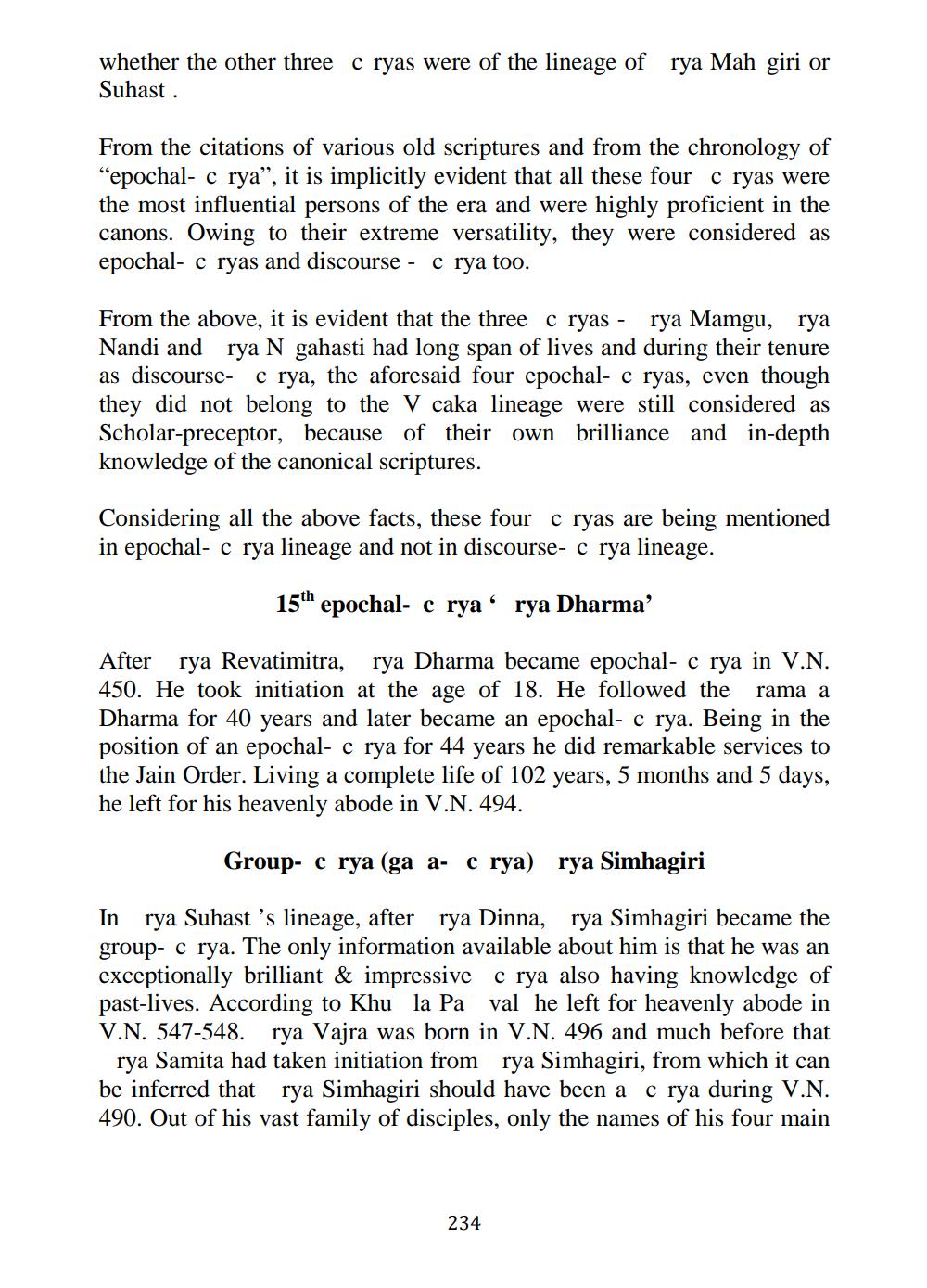________________
whether the other three c ryas were of the lineage of rya Mah giri or Suhast.
From the citations of various old scriptures and from the chronology of "epochal- c rya”, it is implicitly evident that all these four c ryas were the most influential persons of the era and were highly proficient in the canons. Owing to their extreme versatility, they were considered as epochal- c ryas and discourse - c rya too.
From the above, it is evident that the three c ryas - rya Mamgu, rya Nandi and rya N gahasti had long span of lives and during their tenure as discourse- c rya, the aforesaid four epochal- c ryas, even though they did not belong to the V caka lineage were still considered as Scholar-preceptor, because of their own brilliance and in-depth knowledge of the canonical scriptures.
Considering all the above facts, these four c ryas are being mentioned in epochal- c rya lineage and not in discourse- c rya lineage.
15th epochal- c rya“ rya Dharma'
After rya Revatimitra, rya Dharma became epochal- c rya in V.N. 450. He took initiation at the age of 18. He followed the rama a Dharma for 40 years and later became an epochal- c rya. Being in the position of an epochal- c rya for 44 years he did remarkable services to the Jain Order. Living a complete life of 102 years, 5 months and 5 days, he left for his heavenly abode in V.N. 494.
Group- c rya (ga a- c rya) rya Simhagiri
In rya Suhast 's lineage, after rya Dinna, rya Simhagiri became the group- c rya. The only information available about him is that he was an exceptionally brilliant & impressive c rya also having knowl past-lives. According to Khula Pa val he left for heavenly abode in V.N. 547-548. rya Vajra was born in V.N. 496 and much before that
rya Samita had taken initiation from rya Simhagiri, from which it can be inferred that rya Simhagiri should have been a c rya during V.N. 490. Out of his vast family of disciples, only the names of his four main
234




